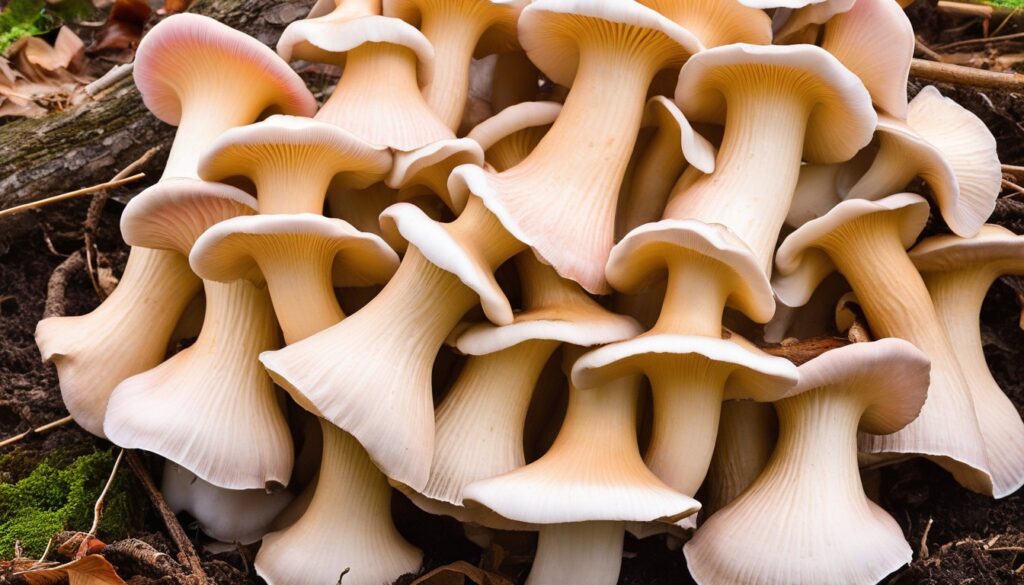Are you a fan of mushrooms and looking to grow your own? Pink Oyster Mushrooms are a great choice for beginners and seasoned cultivators alike due to their delicious taste and relatively easy growing requirements. However, harvesting them can be tricky if you don’t know the proper techniques. In this guide, we will teach you how to harvest Pink Oyster Mushrooms like a professional, ensuring a bountiful and flavorful crop every time.
Key Takeaways
- Pink Oyster Mushrooms are a delicious and easy-to-grow fungus
- Harvesting them requires proper techniques for maximizing yield and quality
- By following our guide, you can confidently harvest Pink Oyster Mushrooms like a pro
- Careful attention to environmental factors, substrate, and maintenance is crucial for healthy mushroom growth and ultimately successful harvest
- Knowing when to harvest and how to properly store and preserve the mushrooms is essential for extending their shelf life and enjoying them beyond their harvest season.
Understanding Pink Oyster Mushrooms
Before you dive into the fascinating world of mushroom cultivation, it is essential to understand the basics of Pink Oyster Mushrooms. These incredible fungi belong to the Pleurotus genus and are named for their vibrant pink color, unique among the oyster mushroom family.
Pink Oyster Mushrooms have a delicate, velvety texture and are prized for their mild, nutty flavor. When cooked, they can take on an umami flavor that pairs well with a wide range of dishes.
If you are planning to cultivate Pink Oyster Mushrooms, it is crucial to understand their growth habits and environmental requirements. These mushrooms are like most fungi, thrive in a warm, humid environment that mimics their natural habitat.
Appearance
Pink Oyster Mushrooms are easily recognizable and can grow up to 10 inches in diameter. They have a smooth, velvety texture with a characteristic pinkish hue that can vary in shades. The gills of Pink Oyster Mushrooms are typically closely spaced, and the stems are often curved or twisted, with a white to a pale brown color.
Growth Habits
Pink Oyster Mushrooms are easy to cultivate and can produce fantastic yields if grown in the right conditions. They are saprophytic fungi, meaning they feed on decaying organic matter such as wood chips, straw, sawdust, and even coffee grounds.
When cultivated, Pink Oyster Mushrooms have a fast growth rate and can produce fruiting bodies within a few weeks. They prefer a temperature range of 70-75°F (21-24°C) and high humidity levels around 80-85% to thrive.
Ideal Conditions for Cultivation
To cultivate Pink Oyster Mushrooms successfully, you need to create an environment that resembles their natural habitat. This includes providing the right substrate, temperature, humidity, and lighting.
The ideal substrate for Pink Oyster Mushrooms depends on your availability and budget. Straw, sawdust, and coffee grounds are all excellent choices. Pink Oyster Mushrooms prefer a temperature range of 70-75°F (21-24°C) and high humidity levels of around 80-85% to thrive.
Good ventilation and proper lighting are also essential for successful mushroom cultivation. However, direct sunlight should be avoided, which can cause the growing space to become too warm and dry.
Pink Oyster Mushrooms are a visual treat and a gastronomic delight, which makes them an excellent add-on to any dish. The unique flavor and texture of these mushrooms make them a popular choice among chefs worldwide.”
Understanding the basics of Pink Oyster Mushrooms is the first step towards successful mushroom cultivation. By providing the right growing environment, substrate, and care, you can enjoy a bountiful harvest of these delicious fungi.
Preparing the Growing Environment
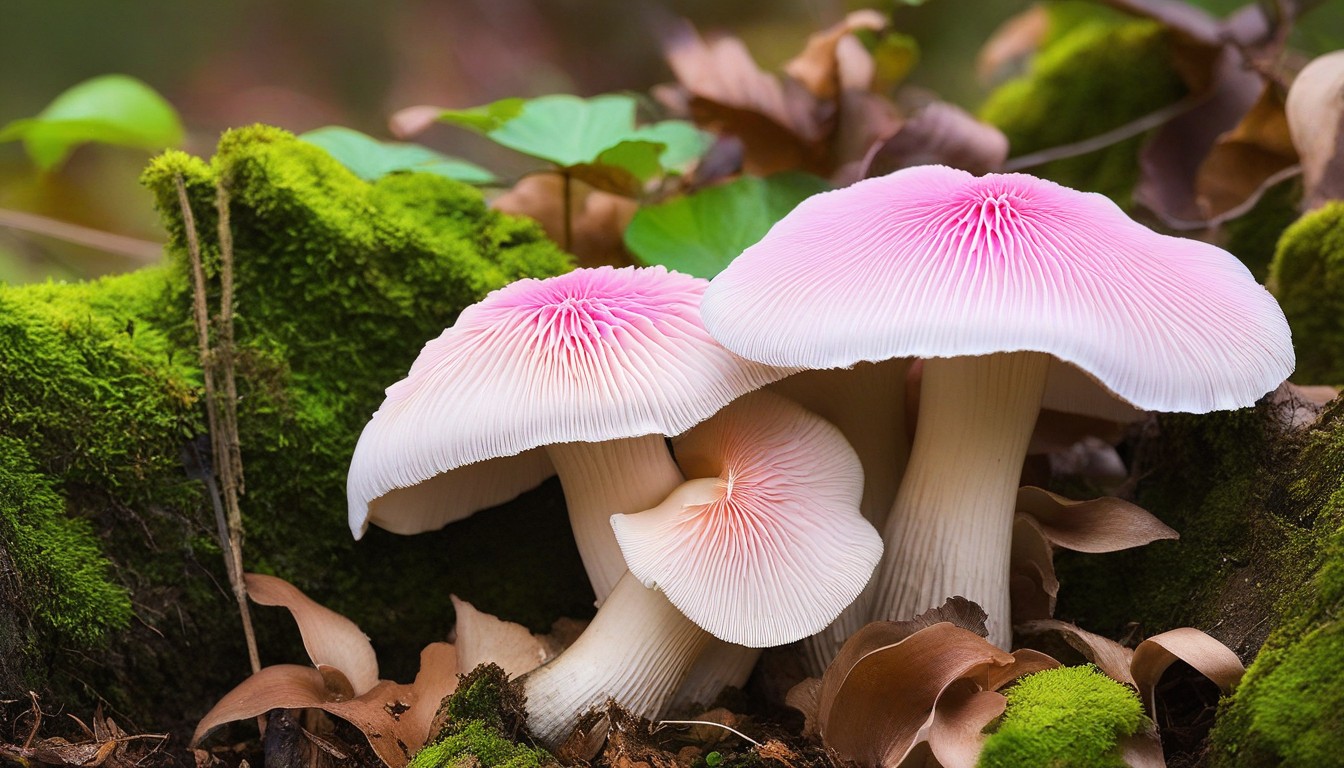
Creating the optimal growing environment is crucial for the successful cultivation of Pink Oyster Mushrooms. Let’s take a closer look at the key factors that impact their growth:
|
Factor |
Optimal Level |
Importance |
|---|---|---|
|
Temperature |
20-25°C |
Pink Oyster Mushrooms thrive in warm, but not hot temperatures. |
|
Humidity |
90-95% |
High humidity levels are essential to prevent the mushrooms from drying out. |
|
Lighting |
12-16 hours of fluorescent lighting per day |
While Pink Oyster Mushrooms do not require light to grow, providing fluorescent lighting can help stimulate growth. |
|
Ventilation |
Adequate airflow without direct draft |
Good ventilation helps to prevent the build-up of carbon dioxide and excess moisture, which can lead to contamination and stunted growth. |
In addition to these factors, it is important to ensure a clean and sterile growing environment. Maintaining the cleanliness of work surfaces, tools, and equipment is essential to prevent the growth of unwanted fungi and bacteria that can harm your Pink Oyster Mushrooms.
By creating the right growing environment and maintaining it properly, you can ensure healthy and abundant Pink Oyster Mushroom growth.
Choosing the Right Substrate
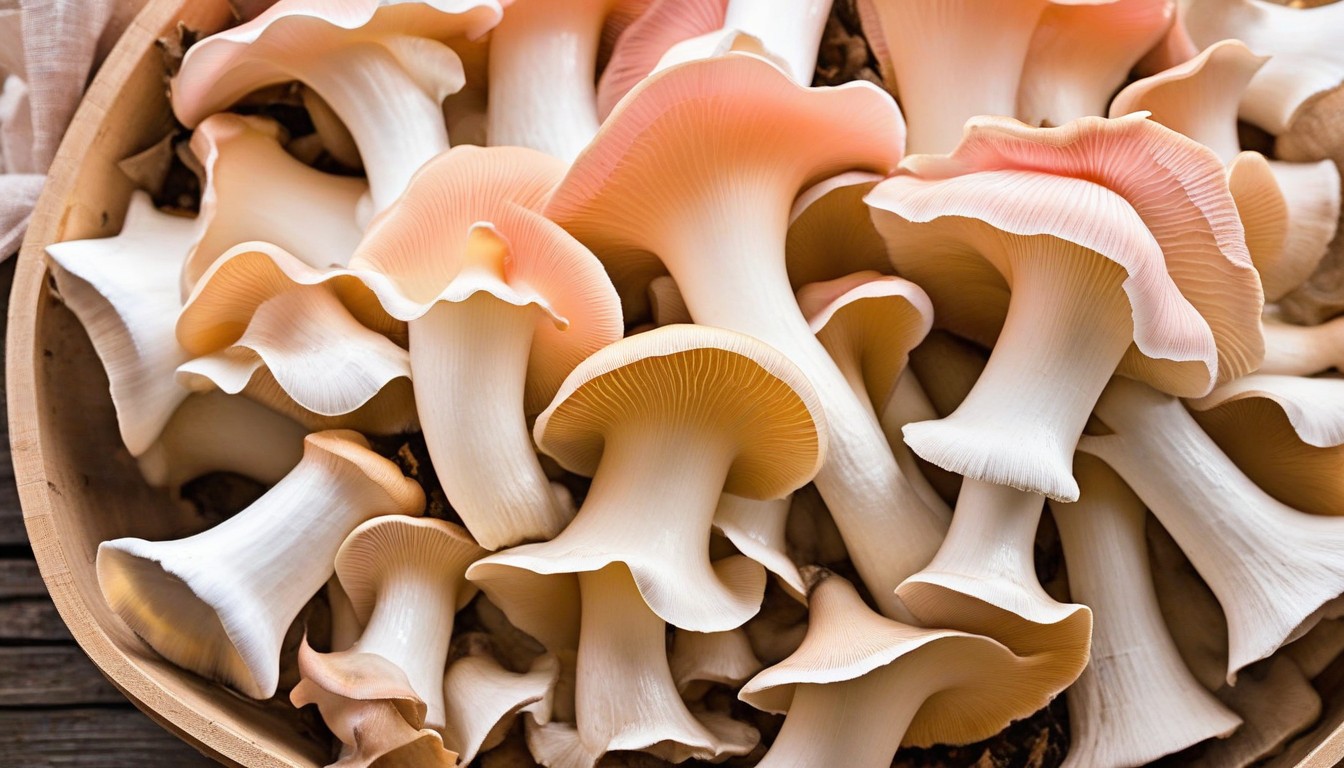
The substrate you use is a critical factor in the success of your Pink Oyster Mushroom cultivation. The substrate serves as the food source for the mycelium, which is the vegetative part of the fungus that produces the fruiting bodies we harvest. Different substrates have unique properties that affect the yield, flavor, and texture of the mushrooms.
Here are some of the commonly used substrates for Pink Oyster Mushrooms:
|
Substrate |
Pros |
Cons |
|---|---|---|
|
Straw |
Readily available, inexpensive, high yielding |
Requires pasteurization, may contaminate easily |
|
Sawdust |
Easy to sterilize, high yielding, consistent quality |
May need supplements, requires equipment to sterilize |
|
Coffee grounds |
Readily available, rich in nutrients, abundant yield |
May require pasteurization, may be prone to contamination |
When choosing a substrate, consider your location, budget, and availability. Also, keep in mind that different substrates require specific growing conditions and techniques.
Overall, successful Pink Oyster Mushroom cultivation boils down to using the right substrate, providing the right environment, and following proper mushroom cultivation techniques. With the right substrate and growing conditions, you can enjoy a bountiful harvest of tasty Pink Oyster Mushrooms!
Setting up a Pink Oyster Mushroom Grow Kit
For those new to mushroom cultivation or those who want a simpler approach, setting up a Pink Oyster Mushroom grow kit is a great option. These kits typically come with everything you need to get started, including pre-sterilized substrate and mushroom spawn.
Step-by-Step Grow Kit Set-Up
Here are the basic steps for setting up your Pink Oyster Mushroom grow kit:
- Open the kit and remove all the contents.
- Prep the substrate according to the kit’s instructions.
- Add the mushroom spawn to the substrate and mix well.
- Place the substrate in the grow bag and seal it with the twist tie provided.
- Poke a few holes in the bag to allow for ventilation.
- Place the bag in a warm, dark place and wait for the mushrooms to start growing.
That’s it! With a little patience and some TLC, you’ll soon have Pink Oyster Mushrooms ready for harvest.
Spawning and Inoculating Pink Oyster Mushrooms
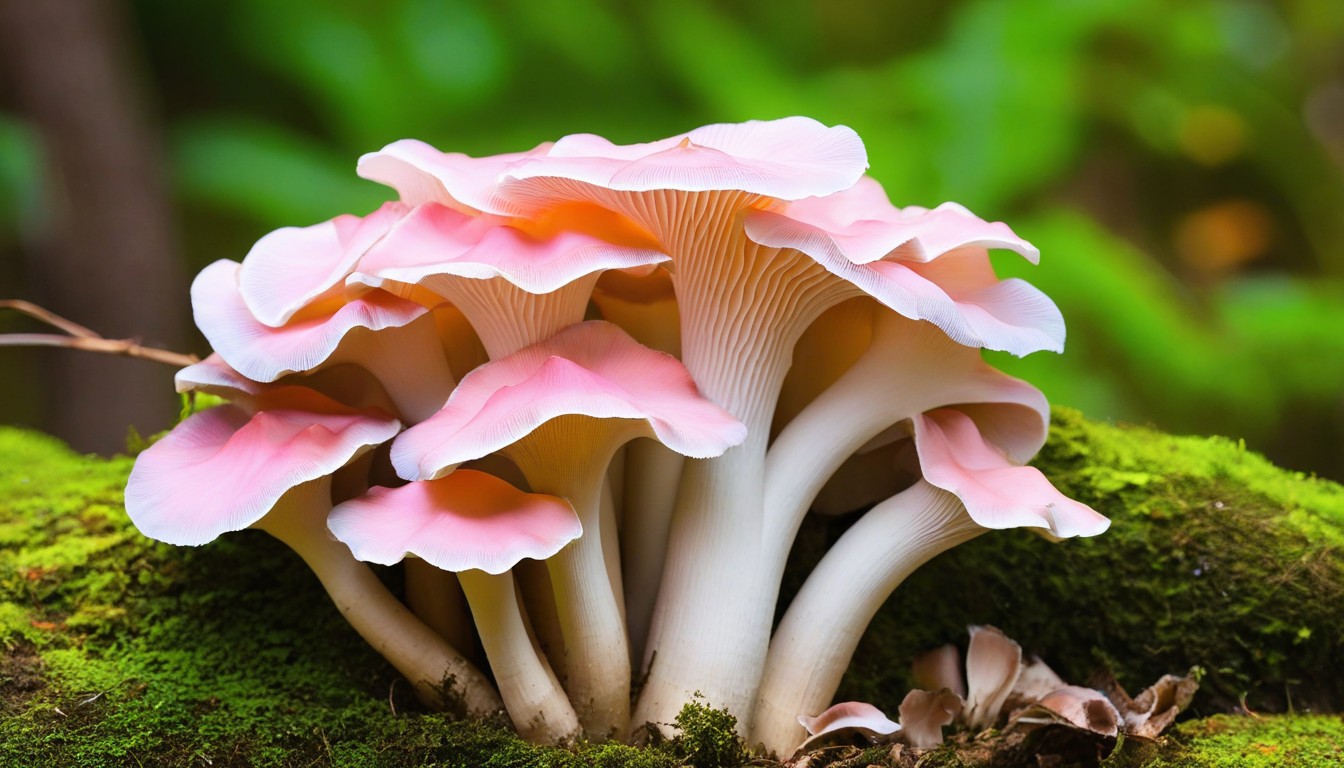
Now that your growing environment and substrate are ready, it’s time to introduce the mushroom spawn to kickstart the cultivation process. Follow these straightforward steps to spawn and inoculate your Pink Oyster Mushrooms like a pro:
- Choose your spawn: Mushroom spawn consists of mushroom mycelium that is used to colonize the substrate. You can purchase pre-made spawn or create your own using a sterile technique.
- Prepare the substrate: Fill your chosen container with your sterilized substrate, leaving room at the top for the mushroom spawn.
- Add the spawn: Sprinkle your mushroom spawn on top of the substrate in an even layer. Cover the spawn with a layer of substrate to protect it from contamination.
- Mix and incubate: Thoroughly mix the spawn and substrate together, then cover the container with a lid and place it in a warm, dark area, such as a closet or unused room. Allow the spawn to colonize the substrate for approximately 10-14 days.
- Prepare the growing container: Once your substrate is fully colonized, it’s time to transfer it to your growing container. Choose a container size that allows for proper airflow and accommodates your substrate depth.
- Inoculate the container: Pour your colonized substrate into the growing container and press it down lightly. Poke holes into the substrate and add your mushroom spawn into these holes. Cover with a layer of substrate.
- Incubate and wait: Place the growing container in a humid and warm environment, and cover it with a breathable lid. Wait for approximately 3-4 weeks for the mushrooms to grow.
Remember, maintaining sterile conditions and following the process carefully is crucial for successful spawning and inoculation of Pink Oyster Mushrooms. Happy growing!
Caring for Pink Oyster Mushrooms
Proper care and maintenance are crucial for healthy Pink Oyster Mushroom growth. Although these fungi are relatively easy to grow, there are a few things you need to keep in mind to maintain optimal conditions for their cultivation. Below are some of the essential tasks you’ll need to perform to ensure a successful harvest:
Watering and Misting
Make sure to water your Pink Oyster Mushrooms regularly to keep the substrate moist. If you’re using a grow kit, you can mist the mushrooms a few times a day to maintain optimal humidity levels. Avoid over-watering, as it can lead to bacterial growth and other issues.
Monitoring for Pests and Diseases
Check your Pink Oyster Mushrooms regularly for pests and diseases. If you notice any signs of mold, black spots, or other issues, remove the affected mushrooms and adjust the growing conditions as needed.
Maintaining Optimal Humidity Levels
Pink Oyster Mushrooms require high humidity levels to grow properly. Depending on the environment, you may need to use a humidifier, a humidifying chamber, or a misting bottle to maintain moisture levels. You can also cover the growing area with a plastic sheet to trap moisture and create a humid microclimate.
Provision of Adequate Light and Fresh Air
Proper lighting and ventilation are also crucial for Pink Oyster Mushroom growth. Ensure that the growing area has adequate natural or artificial light, and provide fresh air to prevent carbon dioxide buildup and promote proper fruiting.
Harvesting Maturity
As we discussed in the previous section, harvesting Pink Oyster Mushrooms at the right time is critical to ensure peak flavor and texture. Check your mushrooms regularly for signs of maturity, such as the cap edges turning upwards. When the caps are fully opened and firm to the touch, it’s time to harvest.
Note: Always sanitize your hands and equipment before handling your Pink Oyster Mushrooms to prevent contamination and ensure freshness.
Identifying the Right Time to Harvest
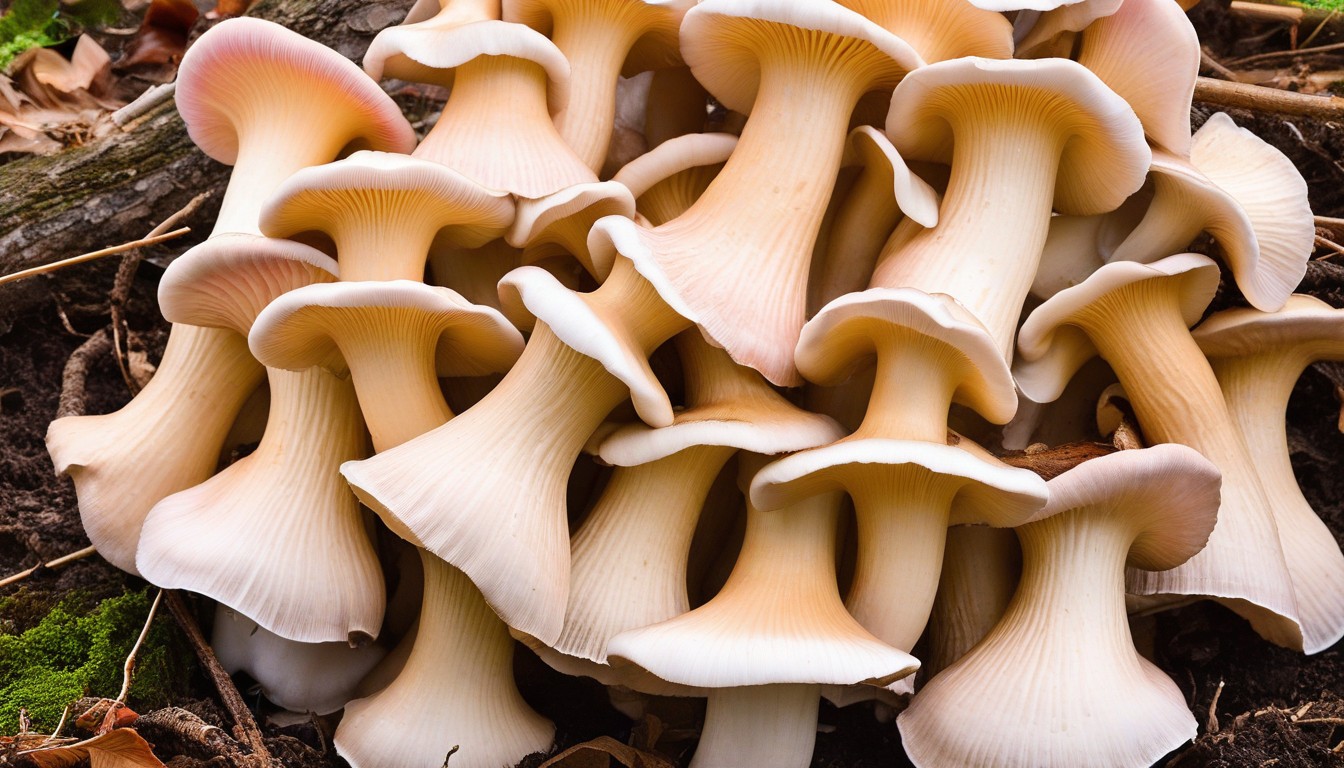
Timing is crucial when it comes to harvesting Pink Oyster Mushrooms. Waiting too long or harvesting too soon can affect the flavor, texture, and yield of your mushrooms. To ensure the best results, it’s essential to know how to recognize the right time to harvest.
Mushroom Maturity
The key to harvesting Pink Oyster Mushrooms like a pro is to understand their growth cycle. Once the mushrooms reach maturity, they will be ready for harvesting. Pink Oyster Mushrooms typically take between 12-14 days to mature, depending on the growing conditions and the chosen substrate.
To determine the maturity of your mushroom crop, keep an eye on the size, color, and shape of the mushrooms. When the edges of their caps begin to curl up, it’s a sign that the mushrooms are almost ready for harvesting. Additionally, the stems should be firm and thick, and the gills should be clearly visible and slightly darker in color.
Harvest Techniques
When it comes to harvesting Pink Oyster Mushrooms, there are two main techniques: cutting and twisting. The cutting method involves using a sharp knife to slice the mushrooms off the substrate, while the twisting method involves gently twisting the mushrooms until they come off the substrate.
Whichever method you choose, ensure that your tools are clean before harvesting to avoid contaminating the mushrooms. It’s also essential to handle the mushrooms gently to avoid damaging them and to ensure they maintain their quality and freshness.
Harvest Timing
The best time to harvest Pink Oyster Mushrooms is before the caps start to flatten out and the stems become too long and thin. This usually means harvesting when the mushrooms are around 3-4 inches in length. Harvesting too late can result in overly mature mushrooms that have a tougher texture and less flavor, while harvesting too early can reduce the overall yield and quality of the crop.
It’s essential to harvest your mushrooms as soon as they reach maturity to prevent them from releasing spores, which can affect the flavor and texture of the remaining mushrooms. This is especially important if you plan to continue growing more mushrooms using the same substrate.
By mastering the art of identifying the right time to harvest Pink Oyster Mushrooms, you can enjoy a bountiful and flavorful crop every time. So keep an eye on your mushroom crop, follow these tips and techniques, and get ready to harvest like a pro!
Harvesting Pink Oyster Mushrooms: Techniques and Tips
Harvesting Pink Oyster Mushrooms at the right time is essential to ensure peak flavor and texture. Follow these techniques and tips to harvest your mushrooms like a pro:
Sanitation
Before harvesting, make sure to sanitize your hands and tools to prevent the spread of contaminants. Use rubbing alcohol or a diluted bleach solution to sanitize your shears or knife.
Harvesting Techniques
There are different techniques you can use to harvest Pink Oyster Mushrooms:
- Twist and pull: Gently twist the stem while pulling it down to detach the mushroom from the substrate. This technique works best for small mushrooms.
- Cut with shears: Use sharp scissors or shears to cut the stem at the base of the mushroom. This method works well for larger mushrooms.
Handling and Storage
Handle your harvested mushrooms gently to avoid damaging them. Avoid washing them as this can reduce their shelf life. Instead, use a soft brush or paper towel to remove any dirt or debris.
Store your Pink Oyster Mushrooms in a paper bag or container lined with paper towels to absorb excess moisture. They can be stored in the refrigerator for up to a week. To extend their shelf life, you can also freeze them or dry them using a dehydrator.
Expert Tip:
Harvest your Pink Oyster Mushrooms when the caps start to flatten out and the edges curl upwards. This indicates that the mushrooms are at their peak maturity and will have the best flavor and texture.
Storing and Preserving Pink Oyster Mushrooms
After going through the effort of harvesting Pink Oyster Mushrooms, it’s essential to know how to properly store and preserve them. Here are some tips to help you extend the shelf life of your mushrooms:
Storing Pink Oyster Mushrooms
Store fresh Pink Oyster Mushrooms in the refrigerator to maintain their freshness and quality. Here are the steps to follow:
- Remove any dirt or debris from the mushrooms using a soft brush or damp cloth.
- Wrap the mushrooms in paper towels or a clean kitchen towel to absorb any excess moisture.
- Place the wrapped mushrooms in a paper or mesh bag to promote air circulation.
- Store the bag of mushrooms in the refrigerator’s vegetable crisper drawer or on a shelf.
- Use the mushrooms within five to seven days for the best flavor and texture.
Preserving Pink Oyster Mushrooms
If you have more Pink Oyster Mushrooms than you can use in a week, there are a few ways to preserve them for later use:
Freezing
Freezing is an excellent option for preserving Pink Oyster Mushrooms for an extended period. Here are the steps to follow:
- Clean and trim the mushrooms as needed.
- Cut the mushrooms into smaller pieces or slices, depending on your preference.
- Spread the mushrooms in a single layer on a baking sheet lined with parchment paper.
- Place the baking sheet in the freezer and freeze the mushrooms for about an hour.
- Transfer the frozen mushrooms to a freezer-safe container or bag, remove as much air as possible, and seal tightly.
- Label the container or bag with the date and freeze for up to six months.
Drying
Drying Pink Oyster Mushrooms is another option for long-term preservation. Here are the steps to follow:
- Clean and trim the mushrooms as needed.
- Cut the mushrooms into thin slices, about 1/4 inch thick.
- Spread the slices in a single layer on a dehydrator tray or a baking sheet lined with parchment paper.
- Place the tray in a dehydrator or an oven set to the lowest temperature (around 140 to 150 degrees Fahrenheit).
- Dry the mushrooms for six to eight hours or until they are dry and crispy.
- Store the dried mushrooms in an airtight container in a cool, dry place for up to a year.
By following these simple tips, you can store and preserve your Pink Oyster Mushrooms to enjoy their delicious flavor and health benefits beyond their harvest season.
Conclusion
Congratulations, you are now equipped with the knowledge and skills to harvest Pink Oyster Mushrooms like a pro! We hope this guide has provided valuable insights and practical techniques to help you maximize your yield and ensure a successful harvest.
Remember, understanding the key characteristics and requirements of Pink Oyster Mushrooms is essential to create the right growing environment. Choosing the right substrate, setting up a grow kit, and properly caring for your mushrooms are crucial steps in the cultivation process. Knowing when to harvest your mushrooms and how to handle and preserve them afterward allows you to enjoy the fruits of your labor beyond the harvest season.
Happy Harvesting!
FAQ
How long does it take for Pink Oyster Mushrooms to grow?
Pink Oyster Mushrooms typically take around 10-14 days to fully mature and be ready for harvest.
Can I grow Pink Oyster Mushrooms indoors?
Yes, Pink Oyster Mushrooms can be grown indoors as long as you provide the correct growing conditions such as temperature, humidity, and lighting.
How often should I water my Pink Oyster Mushroom crop?
It is important to keep the substrate moist but not waterlogged. Watering once or twice a day, depending on the moisture level, usually suffices.
Can I reuse the substrate after harvesting Pink Oyster Mushrooms?
While it is possible to reuse the substrate, it is generally recommended to start with fresh substrate for each new crop to maintain optimal mushroom growth and minimize contamination risks.
How should I store harvested Pink Oyster Mushrooms?
Harvested Pink Oyster Mushrooms should be stored in a paper bag or breathable container in the refrigerator. Avoid sealing them in plastic bags as it can cause moisture build-up and accelerate spoilage.
Are Pink Oyster Mushrooms edible?
Yes, Pink Oyster Mushrooms are not only edible but also highly sought after for their delicate flavor and meaty texture. They can be used in various culinary preparations.
Can I freeze Pink Oyster Mushrooms?
Yes, Pink Oyster Mushrooms can be frozen to extend their shelf life. However, it is recommended to blanch them briefly before freezing to preserve their quality.
How do I know if my Pink Oyster Mushrooms are contaminated?
Signs of contamination in Pink Oyster Mushrooms include unusual colors, foul odors, slimy textures, or the presence of mold. If you notice any of these signs, it is best to discard the affected mushrooms to prevent further contamination.

